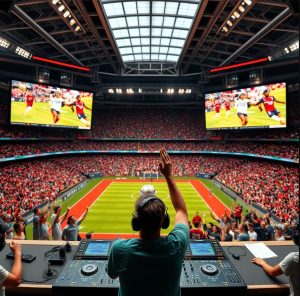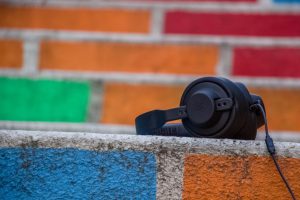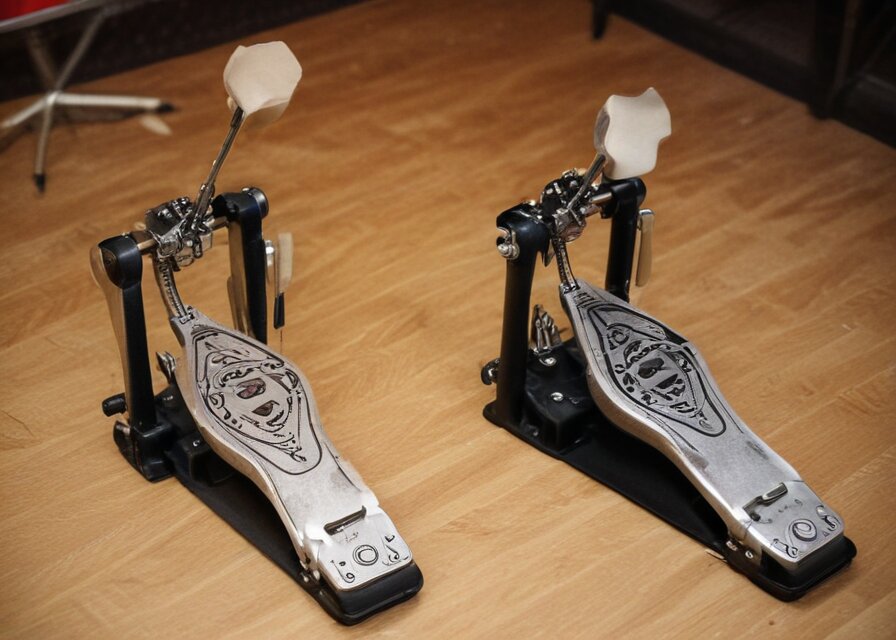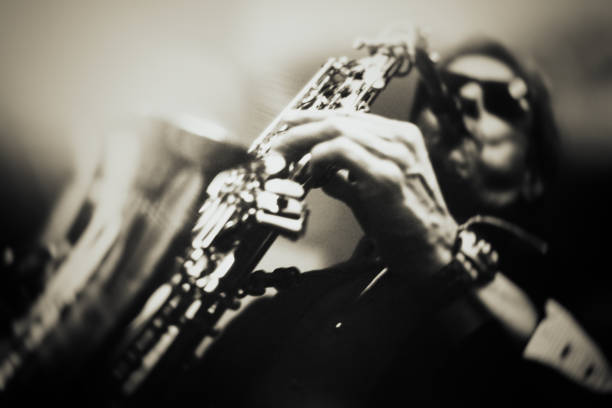
Escape rooms have become a popular recreational activity, offering participants the chance to test their problem-solving skills in immersive environments. As the demand for unique and engaging experiences grows, escape room designers are constantly seeking innovative ways to enhance the gameplay. One such method gaining traction is the integration of music into escape room scenarios like a trapped excitement at LOST SG. In this article, we delve into the relationship between music and creativity, exploring how it can serve as a guiding force in navigating escape room challenges.
Introduction
Creativity is a fundamental aspect of human cognition, allowing individuals to generate novel ideas and solutions to complex problems. In the context of escape rooms, where participants are tasked with unraveling mysteries and decoding clues within a limited time frame, creativity plays a crucial role in achieving success. By fostering a creative mindset, participants can approach challenges from unique perspectives, increasing their chances of triumph.
Understanding Escape Rooms
Escape rooms, also known as puzzle rooms or adventure games, are interactive experiences where players work together to solve a series of puzzles and riddles to escape a themed scenario. Originating from the world of video games, escape rooms have gained popularity worldwide, offering a real-life counterpart to virtual adventures. Participants must utilize their observational skills, logic, and teamwork to uncover hidden clues and unlock the final mystery.
The Role of Music in Creativity
Music has long been recognized as a powerful catalyst for creativity. Its ability to evoke emotions and stimulate the imagination makes it an ideal companion for problem-solving endeavors. Research has shown that listening to music can enhance cognitive function, improve mood, and boost productivity. In the context of creativity, music serves as a source of inspiration, facilitating the flow of ideas and enhancing mental flexibility.
Music as a Guide in Escape Rooms
In escape room design, music plays a multifaceted role in shaping the player experience. From setting the ambiance to reinforcing thematic elements, music serves as a guiding force that directs players’ attention and influences their emotional state. By carefully selecting and integrating music into the gameplay, designers can enhance immersion and engagement, creating a more dynamic and memorable experience for participants.
How Music Stimulates the Brain
The effects of music on the brain have been widely studied, revealing its profound impact on various cognitive processes. When exposed to music, the brain undergoes intricate neurological changes, triggering responses in areas associated with memory, emotion, and reward. During problem-solving tasks, music can stimulate neural pathways involved in creativity, facilitating divergent thinking and enhancing cognitive flexibility.
Enhancing Creativity Through Music in Escape Rooms
In the context of escape rooms, music serves as a catalyst for creativity, inspiring participants to think outside the box and explore unconventional solutions. By immersing players in a rich auditory environment, designers can evoke a sense of wonder and curiosity, encouraging them to approach challenges with open minds. Whether it’s through subtle background melodies or dramatic soundscapes, music can elevate the gameplay experience, fostering a deeper sense of engagement and enjoyment.
Case Studies: Music-Driven Escape Rooms
Several escape rooms have successfully integrated music into their gameplay, demonstrating its effectiveness in enhancing the overall experience. For example, “The Symphony of Secrets” invites players to unravel a musical mystery while solving puzzles inspired by classical compositions. Similarly, “Rhythmic Riddles” challenges participants to decode rhythmic patterns and melodies to progress through the game. Feedback from players has been overwhelmingly positive, highlighting the role of music in elevating the immersion and enjoyment factor.
Practical Tips for Designing Music-Driven Escape Rooms
Designing a music-driven escape room requires careful planning and consideration of various factors. Firstly, designers must select music that complements the theme and narrative of the game, enhancing the overall atmosphere and immersion. Additionally, the volume and intensity of the music should be adjusted to maintain a balance between ambiance and distraction. Incorporating interactive elements, such as triggering specific musical cues based on player actions, can further enhance the immersive experience.
Challenges and Considerations
While music can significantly enhance the gameplay experience, there are potential challenges and considerations that designers must address. For instance, the preferences and sensitivities of players may vary, requiring careful selection of music that appeals to a diverse audience. Moreover, accessibility concerns, such as hearing impairments, must be taken into account to ensure an inclusive experience for all participants. Additionally, designers must be mindful of copyright issues when using licensed music in their escape rooms, obtaining the necessary permissions and licenses to avoid legal complications.
Future Trends and Innovations
Looking ahead, the future of music-driven escape rooms is filled with exciting possibilities. Advances in technology, such as virtual reality and augmented reality, are reshaping the landscape of interactive entertainment, offering new avenues for creative exploration. By harnessing the power of emerging technologies, designers can create immersive experiences that push the boundaries of traditional escape room concepts. The role of music is poised to evolve alongside these innovations, continuing to inspire and guide players through captivating adventures.
Learn more about music starting with this related article: Experience the Beat: Local Live Music Events That Will Ignite Your Passion for Music
Conclusion
In conclusion, music serves as a powerful tool for unlocking creativity and guiding minds through escape room challenges. By leveraging the emotional and cognitive effects of music, designers can create immersive experiences that engage the senses and stimulate the imagination. As the popularity of escape rooms continues to grow, the integration of music offers new opportunities for innovation and creativity, enriching the gameplay experience for participants.

 Music and sports broadcast have formed a powerful partnership over the years. From high-energy intros to emotional soundtracks during key moments, music plays a role in how fans experience their favorite sports. Broadcasters rely on music to create excitement, build tension, and add a sense of drama to games. Without the right tunes, even the most thrilling moments in sports can feel flat.
Music and sports broadcast have formed a powerful partnership over the years. From high-energy intros to emotional soundtracks during key moments, music plays a role in how fans experience their favorite sports. Broadcasters rely on music to create excitement, build tension, and add a sense of drama to games. Without the right tunes, even the most thrilling moments in sports can feel flat. Remove fingerboard rosin dust with a soft cloth. Do not use harsh chemicals or solvents.
Remove fingerboard rosin dust with a soft cloth. Do not use harsh chemicals or solvents. Millions of African Americans left the rural South for the cities of the North and West during the Great Migration, which played a significant role in the development of R&B. A new sound emerged as a result of the fusion of previously separate musical traditions.
Millions of African Americans left the rural South for the cities of the North and West during the Great Migration, which played a significant role in the development of R&B. A new sound emerged as a result of the fusion of previously separate musical traditions. The call for inclusivity and safety is more pronounced than ever. As diverse groups seek spaces where they can enjoy music and social interaction without fear of discrimination or discomfort, the importance of inclusivity cannot
The call for inclusivity and safety is more pronounced than ever. As diverse groups seek spaces where they can enjoy music and social interaction without fear of discrimination or discomfort, the importance of inclusivity cannot  When people think about creativity, art and music often come to mind. These forms of expression can move emotions and inspire ideas, but there’s another less obvious form of creativity that also deserves recognition: maintaining and repairing things around the house, like gates. While it might not sound as glamorous as painting a canvas or composing a melody, gate maintenance by https://4suregates.com/service-areas/automatic-gate-repair-in-dallas-tx/ requires a creative touch and can be quite satisfying.
When people think about creativity, art and music often come to mind. These forms of expression can move emotions and inspire ideas, but there’s another less obvious form of creativity that also deserves recognition: maintaining and repairing things around the house, like gates. While it might not sound as glamorous as painting a canvas or composing a melody, gate maintenance by https://4suregates.com/service-areas/automatic-gate-repair-in-dallas-tx/ requires a creative touch and can be quite satisfying.



